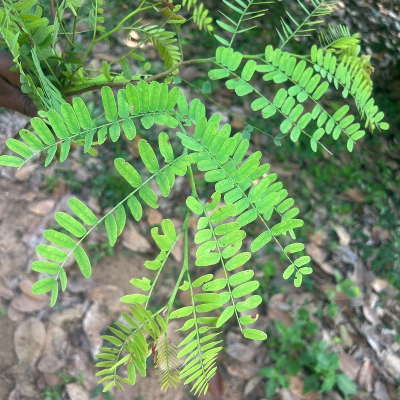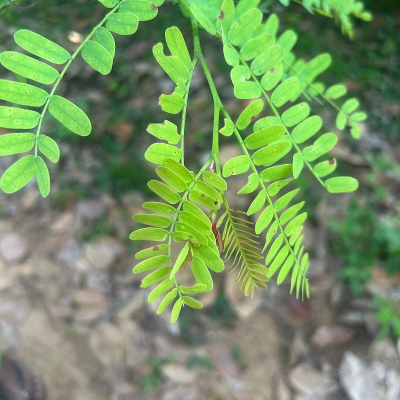Distribution and habitat: Found throughout India particularly in the south, often cultivated.
Botany: A large evergreen tree, 30 m in height; bark grey with longitudinal fissures. Wood hard.
Branches spreading and glabrous.
- Leaves: Paripinnate up to 15 cm long, rachis slender, channeled, leaflets 10-20 pairs, subsessile, oblong.
- Flowers : Yellow with pink streaks, in lax racemes. Pod filled with acrid pulp, brownish ash coloured of the flat faces.
- Seeds: 3-12, brown, compressed, enveloped by a tough leathery membrane (the endocarp) and the pulpy mesocarp, testa shiny, hard.
Properties:
- The root bark is astringent, constipating, emmenagogue and tonic.
- The leaves are sour, astringent, thermogenic, anthelmintic, anodyne, anti-inflammatory, anodyne, antifungal, diuretic and febrifuge.
- The fruits are sour, sweet, refrigerant, digestive, caraminative, laxative, antiscorbutic, antiseptic, ophthalmic and febrifuge.
- The seeds are cooling, astringent, cooling, aphrodisiac, stomachic, constipating and tonic.
Chemical constituents: Flavone Chronic- glycoside-oricutin
Uses:
- Pulp of seed is used in food and medicine. It is laxative, stomachic, quenches the thirst.
- Seed is used in dysentery.
- Gum reduced to fine powder used in ulcer.
- Leaf infusion used in country sore eyes, foul ulcers
Formulations: Hinguracadi churnam, Cincadi leham, Hinguracadi churnam, Cincadi leham
Agro technology
Climate and soil: It can thrive in tropical and subtropical climate except in places experiencing frost. It thrives even in sodic and saline soils, ravines and degraded land.
Propagation: Seeds
Manuring: Apply 10 kg cattle manure or compost per seedling / graft during one year. Apply N: P2O5: K2O mixture at the rate of 20:18:50 g /plant during the first year. Double the dose in the second year and gradually increase it to 500: 250:1000g/plant/ per year at the 15 th year.
Pests and diseases: Hard scales and beetles are found to infest crop. Hard scales desap the leaves and tender shoots. But adult beetle and their grubs defoliate the crop inflicting heavy loss of yield. In grafts and large trees, sometimes, fungal thread blights have been observed to cause leaf and twig blight. Adopt proper pruning and spray 1% Bordeaux mixture or mancozeb 0.3%.
Harvesting: The seedlings take 8-10 years for fruiting and the grafts takes 4-5 years fruiting. It is not uncommon that trees with more than 100 years yielding normally. Fruits are harvested from December –April.




